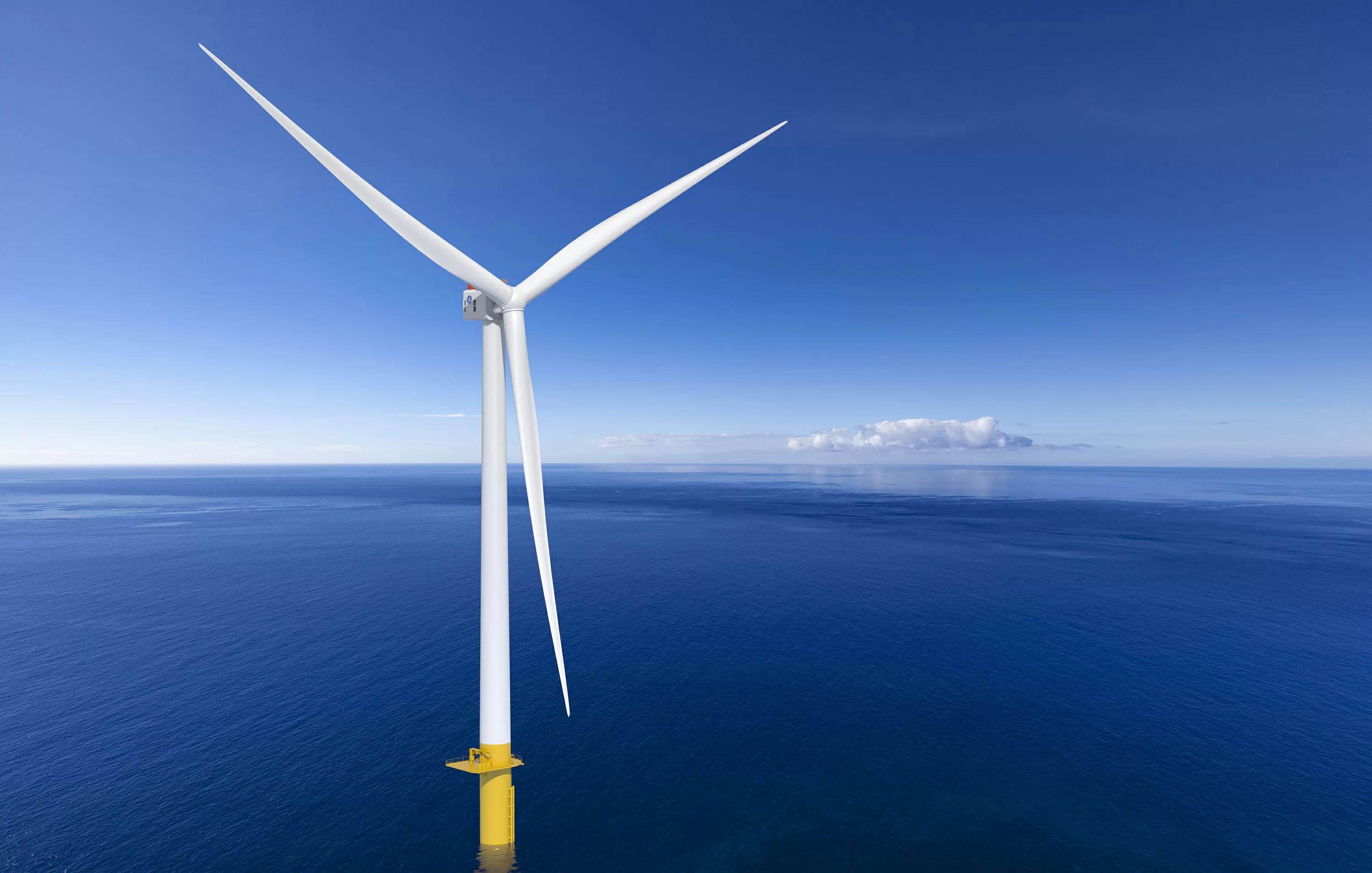The federal Bureau of Ocean Energy Management issued its record of decision Tuesday approving the Vineyard Wind offshore energy project, a bellwether event that renewable energy advocates hope will trigger a wave of new U.S. investment in wind power equipment and shipbuilding.
“A clean energy future is within our grasp in the United States. The approval of this project is an important step toward advancing the administration's goals to create good-paying union jobs while combatting climate change and powering our nation,” Interior Secretary Deb Haaland said in announcing the record of decision.
“Today’s offshore wind project announcement demonstrates that we can fight the climate crisis, while creating high-paying jobs and strengthening our competitiveness at home and abroad,” said Commerce Secretary Gina Raimondo, the former Rhode Island governor who worked to make her state government an early supporter of offshore wind development.
The record of decision is an interagency document for permitting by BOEM, the Corps of Engineers, and the National Marine Fisheries Service. Vineyard Wind developers Avangrid and Copenhagen Infrastructure Partners next must submit a facility design report and a fabrication and installation report detailing details for how the 800-megawatt, $2.8 billion turbine array “will be fabricated and installed in accordance with the approved Construction and Operations Plan,” according to the announcement from the Department of Interior.
The decision hews to the agency-preferred alternative of a grid layout of 62 turbines spaced at 1 nautical mile intervals. Commercial fishermen, led by the Responsible Offshore Development Alliance (RODA), had advocated 4-nm wide vessel transit lanes which they contend would enhance safety.

In its decision document, BOEM reasons that 1-nm spacing will be sufficiently safe, while dedicated transit lanes could increase congestion and potentially collisions by funneling vessel traffic.
Citing advice from the Coast Guard, agency officials write that the “uniform grid pattern will result in the functional equivalent of numerous navigation corridors that can safely accommodate both transits through, and fishing within, the WEA (wind energy area) and provide the USCG with adequate SAR (search and rescue) access.”
The Responsible Offshore Development Alliance fired back with a statement saying traffic lanes were not the only fishing industry suggestion left out of the decision.
“BOEM continues to abdicate its responsibility to the public and leave all decision making to large, multinational corporations, including this decision which includes effectively no mitigation measures to offset impacts to critical ocean ecosystems and commercial fisheries,” the group said. “To the best of our knowledge BOEM did not even consider any mitigation measures recommended by RODA or any fisheries professionals, scientists, or natural resource managers, despite having clearly defined requests available to them.”
“For the past decade, fishermen have participated in offshore wind meetings whenever they were asked and produced reasonable requests only to be met with silence,” said RODA executive director Anne Hawkins, whose group in April protested by boycotting BOEM meetings on wind energy planning for the New York Bight.
“From this silence now emerges unilateral action and a clear indication that those in authority care more about multinational businesses and energy politics than our environment, domestic food sources, or U.S. citizens.”
Wind power and offshore industry advocates welcomed the decision, which follows the Biden administration’s speedy turnaround of an attempt by the outgoing Trump administration to terminate Vineyard Wind’s environmental review.
"This approval should signal 'go' to all the supply chain companies that were waiting to see if the industry would move to commercial scale construction," said Liz Burdock, president and CEO of the Business Network for Offshore Wind. "Consistent approval of these pending offshore wind projects will help catapult the U.S. as a leader in the offshore wind market and create thousands of well-paying jobs.”
“Now is the time to push forward on offshore wind, catch up to global competitors, and decarbonize our electric grid, so that the U.S. can deliver economic and environmental benefits to our citizens and combat climate change,” said Heather Zichal, CEO of the American Clean Power Association.
Some of that cheerleading is coming from the Gulf of Mexico offshore industry, older rivalries between the fossil fuel and renewable energy industries notwithstanding.
After a long decline in oil and gas fortunes, offshore service providers see lots of new opportunities off the East Coast.
“The greenlight of the Vineyard Wind project is an American energy milestone. Along with the 400,000 homes that will soon be powered by the Vineyard Wind project, an entire supply chain is ready to mobilize and get to work, providing Americans with thousands of jobs and billions of dollars of investment,” said Erik Milito, president of the National Ocean Industries Association. “American offshore wind is a generational opportunity, and its outlook is more certain with the Vineyard Wind record of decision.”
Milito echoed offshore wind advocates’ calls for BOEM to plan for new offshore wind leases: “President Biden can continue this offshore wind momentum through the continued permitting of projects in the queue and the implementation a regular and predictable timeline of future lease opportunities.”
Among environmental safeguards and mitigation measures, the record of decision says BOEM in coordination with NMFS will require additional protections for endangered northern right whales, a population that has fallen to just an estimated 366 animals in U.S. and Canadian waters. NMFS recently reported the whales have increased their use of the southern New England wind energy areas in migration and feeding.
Among its requirements the BOEM decision calls for increased surveillance and monitoring to find when right whales are near the Vineyard Wind project area, and restrictions on construction activity. That includes a prohibition on pile driving during the month of December unless Vineyard Wind can demonstrate that whales won’t be disturbed.




